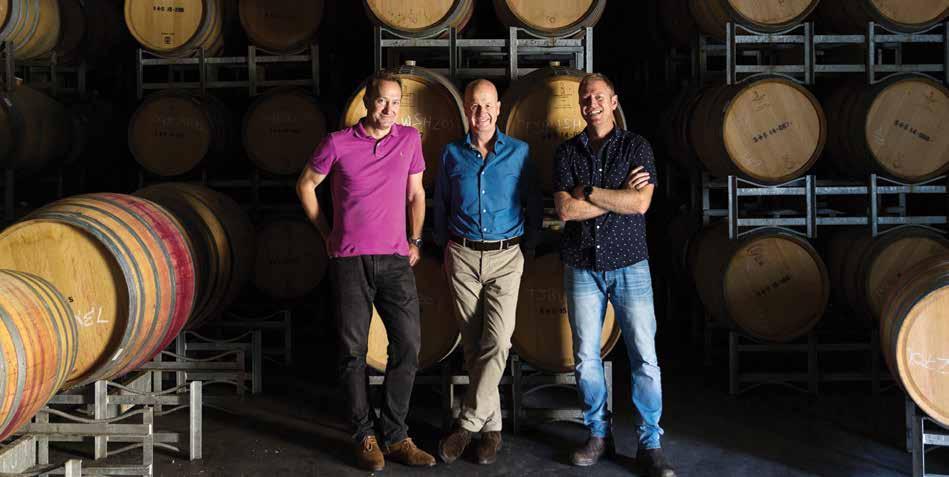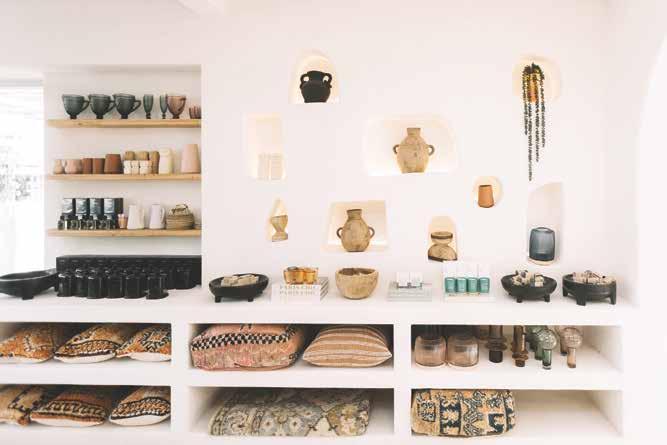
4 minute read
Perfect Pinot
from Cove magazine
According to Tony Harper, the 2018 Shaw and Smith Lenswood Pinot Noir is an epiphany wine.
THE ADELAIDE HILLS have produced heaps of benchmarks made from Chardonnay, Sauvignon Blanc, Shiraz and Nebbiolo.
But, as far as I’ve tasted (ignoring the freakishly good Ashton Hills wines), very few, if any, remarkable Pinots.
Shaw and Smith – the company buoyed (and no doubt equally as fettered) by its reputation for Sauvignon Blanc, has turned that notion on its head with what is not only a wonderful expression of Adelaide Hills Pinot Noir, but a great example of the variety, regardless of its origins.
But I’m getting ahead of myself ...
When cousins Martin Shaw and Michael Hill Smith established Shaw and Smith, a smidge over three decades ago, they chose the Adelaide Hills as their base to make cool-climate, top quality wines.
A decade later they purchased a site near the small township of Balhanna on the western slopes of the Adelaide Hills, to establish their vineyards, winery and brand.
The Shaw and Smith Sauvignon Blanc has become part of our vinous vernacular, while the M3 Chardonnay and Adelaide Hills Shiraz added some glitz to the range.
It was and is a successful brand with a fabulous reputation.
The founders and their families could no doubt have trundled along quite happily on the back of the Shaw and Smith label and its Balhanna vineyards.
But anyone who has ever met the cousins would realise that was never going to happen.
Two brilliant men with ambition, a quartet of canny eyes on the Australian and international wine scenes and enough insight to realise they could grow their people and their vineyards.
In 2012 David LeMire joined the team as Sales and Marketing Manager (now joint CEO), and a year later they hit paydirt by recruiting Adam Wadewitz – a young, incredibly talented winemaker (also now joint CEO).
From that point on things seem to have accelerated.
First there was the 2011 purchase of the Tolpuddle vineyard in Tasmania’s Coal River Valley.
Almost immediately the Tolpuddle Chardonnay’s and Pinot Noirs became some of the most sought after in the country – they are amazing wines.
A year later they found a 20 hectare vineyard in Lenswood – not much more than 7 kilometres from the Balhanna site if you were a crow, planted to Sauvignon Blanc, Chardonnay and Pinot Noir, so they bought it.
Unlike Tolpuddle, which sits aside from the Shaw and Smith brand, the Lenswood Vineyard wines are labelled as Shaw and Smith, but with markedly different labels.
The Lenswood vineyard is higher and cooler than Balhanna, with steeper slopes and a slightly different soil profile.
It’s obviously more suited to Pinot Noir, but it also makes Chardonnay with a much different profile than the M3 – more flinty, less opulent and probably more age-worthy.
You can see the thinking behind owning two vineyards so close in proximity, but quite disparate in terms of the wines they produce.
They give very different interpretations of what the Adelaide Hills can muster, even if they come out of the one shed.
And that’s part of puzzle that makes wine such a wonderful drink.
But it’s the Pinot Noir from the Lenswood vineyard that I reckon speak loudest to not just the qualities of the land, but also the Adam Wadewitz touch, and the guile of his winemaking team.
It’s hard not to wonder how much the learning from making the Tolpuddle Pinots has influenced what they do with the Lenswood fruit.
Regardless, there is a beautiful touch to the Shaw and Smith Lenswood Pinots ... they are fine and pretty – much lighter framed than their Tasmanian kin – but braced by an earthy, savoury frame that takes it from simple Adelaide Hills Pinot (and they can be kind of simple) to something much more beguiling and profound.
The land acquisition didn’t end with the Lenswood vineyard.
There’s a gorgeous hillside in the Piccadilly Valley, steep, cool and planted by the Shaw and Smith team to a very Burgundian 10,666 vines per hectare (that’s 75 centimetres between the vines, in rows just over a metre wide).
This kind of farming is labour intensive, and – if you have the means – the catalyst for some special equipment.
Parked in the vineyard shed is a tractor that appears hybridised to a moon-buggy and a hornet.
It works with hydraulics, pumping up to span the rows and work within their narrow confines: I long to drive it.
The vines are babies – Chardonnay and Pinot Noir – and it will be a few years before we see a Shaw and Smith Piccadilly Chardonnay and Pinot Noir.
But it will happen, and when it does we will have an open door to tasting top-notch wines, made by the same hands, in the same walls, but sourced from similar but different vineyards within a bike ride of each other. I can’t wait.












